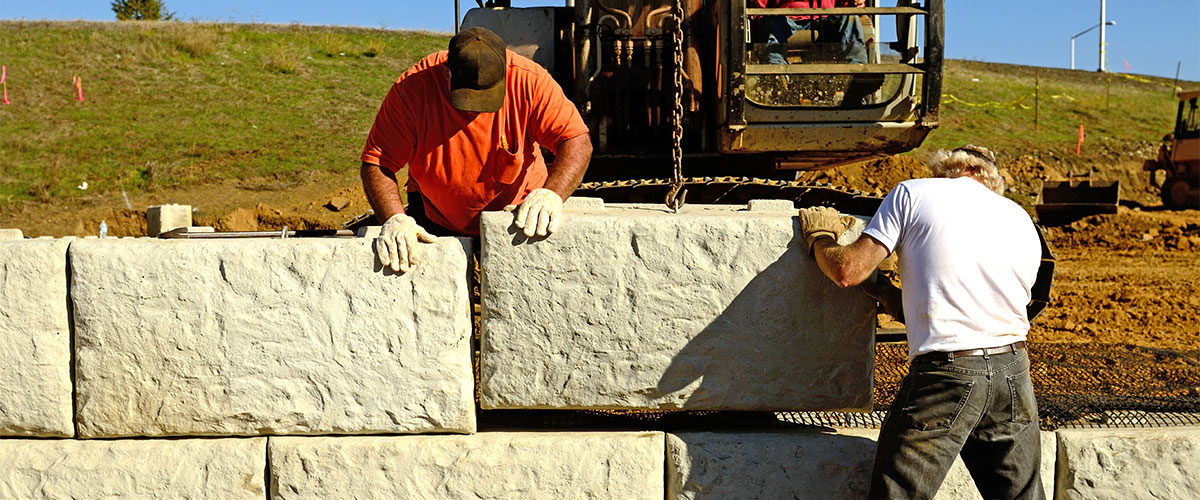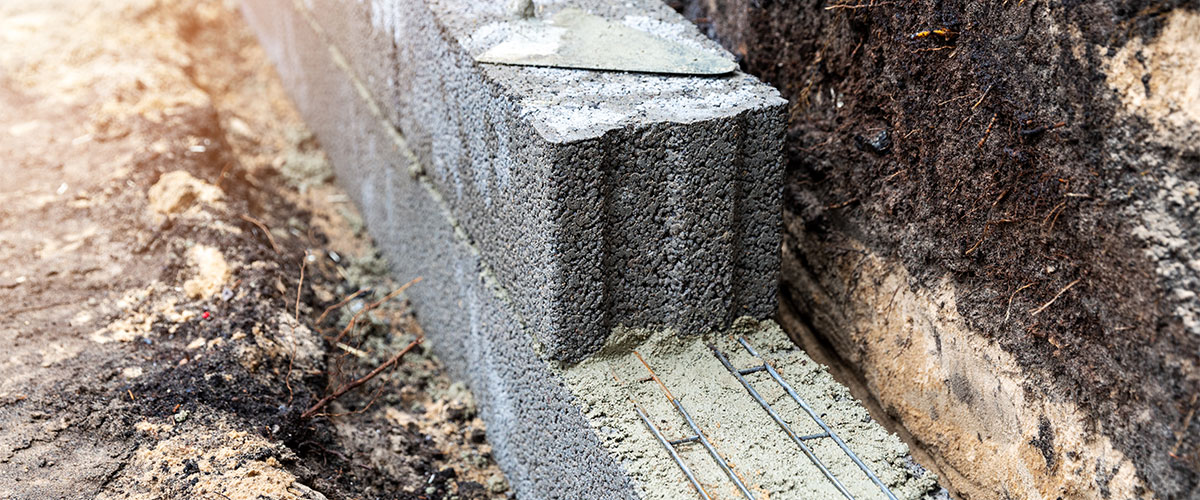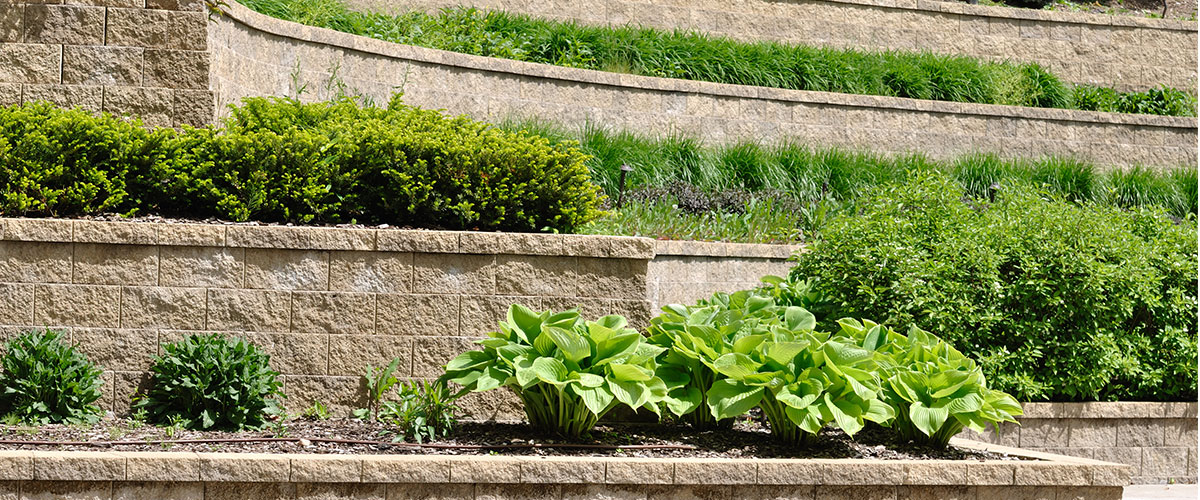While they might appear simple, retaining walls are actually complex structures that can be used for a variety of different reasons. Retaining walls turn a sloped area into a functional flat piece of land. They also prevent erosion by holding back soil and water. Any retaining wall can be made of different materials to evoke different design styles. From concrete retaining walls to gravity block walls, there are quite a few options to choose from. But what materials can you use to build a retaining wall, and which material is best? Let’s take a look.

Before beginning the process of building a retaining wall, you’ll need to pick a building material. After all, the effectiveness, longevity, and stability of your retaining wall will depend on it. While there are quite a few materials you can use to make the wall, here are the ones most commonly used:
Out of all retaining wall systems, this is perhaps the most affordable. While timber size and construction methods can vary, contractors generally use wooden retaining walls as an option for short slopes that are prone to eroding or being unstable over time. They can easily be constructed by both homeowners and contractors.
Rock retaining walls, also known as boulder retaining walls, are popular in Utah and the Intermountain West because of their beauty and durability. To make this retaining wall, large stones are stacked on top of each other and then backfilled to create different slope levels. They’re built to hold back more sizeable slopes but can be used for smaller grades of land, too.
With this technique, pre-formed stones or bricks are stacked and cemented together to form a wall. It’s best to have a professional install this type of retaining wall because of its complexity. While they can be more complex than other retaining wall types, they’re often a focal point in the landscape and offer clean, modern lines. When constructed correctly, they’re durable and last for many years.
Perhaps the easiest and most durable retaining walls are gravity block walls. They’re an excellent option for both a handy homeowner and contractor because of their easy installation. At Harper Precast, we use interlocking concrete blocks that require no mortar or pins. They stack together using a patented system. While homeowners can use them, Harper Precast works with each customer to design, engineer, and install the perfect gravity wall for each challenging landscape.

Most retaining walls need drainage to be successful. Retaining walls without drainage can cave in, lean, or buckle from the extra pressure. You’ll need to add weep holes, gravel backfill, soil compaction, and pipe or toe drains, depending on the type of retaining wall you’re planning on building. In this example, we’ll build a gravity block wall.
Determine which type of retaining wall would be best for your landscape and plan on buying the materials. Be sure to purchase 10 percent more than what you think you need. Purchasing additional supplies will account for any estimate error and give you extra materials, should you need them in the future.
Measure the length, width, and height of the wall using square feet, then mark the area using garden stakes and string or line. Using the string and stakes, mark the wall’s desired height, ensuring that the string is level.
Before beginning the process of building a wall, make sure it is a dry day with no rain in sight. A good, solid retaining wall starts with a level base. Start by digging a trench where your blocks will sit, about twice the width of a single block. Compact the trench with a hand tamper and use a 2×4 to judge the base, ensuring that its level.
To last years, you must have a solid base for a retaining wall. Start with a gravel base with stones ½” to ¾”, then fill the trench with a 2-3″ layer of gravel, using a rake to distribute the stones evenly. Use a tamper to make sure the base is evenly compacted before beginning the next step of building the wall.

Start by centering the blocks in the middle of the trench, using a level to ensure it’s even. Blocks can be adjusted using a rubber mallet and additional gravel to make them level.
The next step is to install your drainage solution, whether it is a drainage pipe, weeping holes, or toe drains.
Once the blocks have been laid, you can begin backfilling the slope behind the wall. It’s important to backfill with sand or gravel. If using sand, cover the area you are about to fill with landscape fabric. As you backfill the area behind the wall, tamp down the material to prevent any hollow areas.

Once you’ve backfilled the wall, fill any remaining areas with topsoil. Then you can top it with grass, ground cover, or other landscaping features you’d like.
While it’s possible to build your own retaining wall in Utah, it’s a task that is most often best left to the experts. At Harper Precast, we supply cost-effective retaining wall solutions that are durable enough to last many years in industrial, commercial, or residential settings. From gravity block walls to precast retaining walls to concrete walls in Utah, we’re the professionals you can trust to supply premium materials and industry-leading concrete solutions. Contact us today to get started on your project.